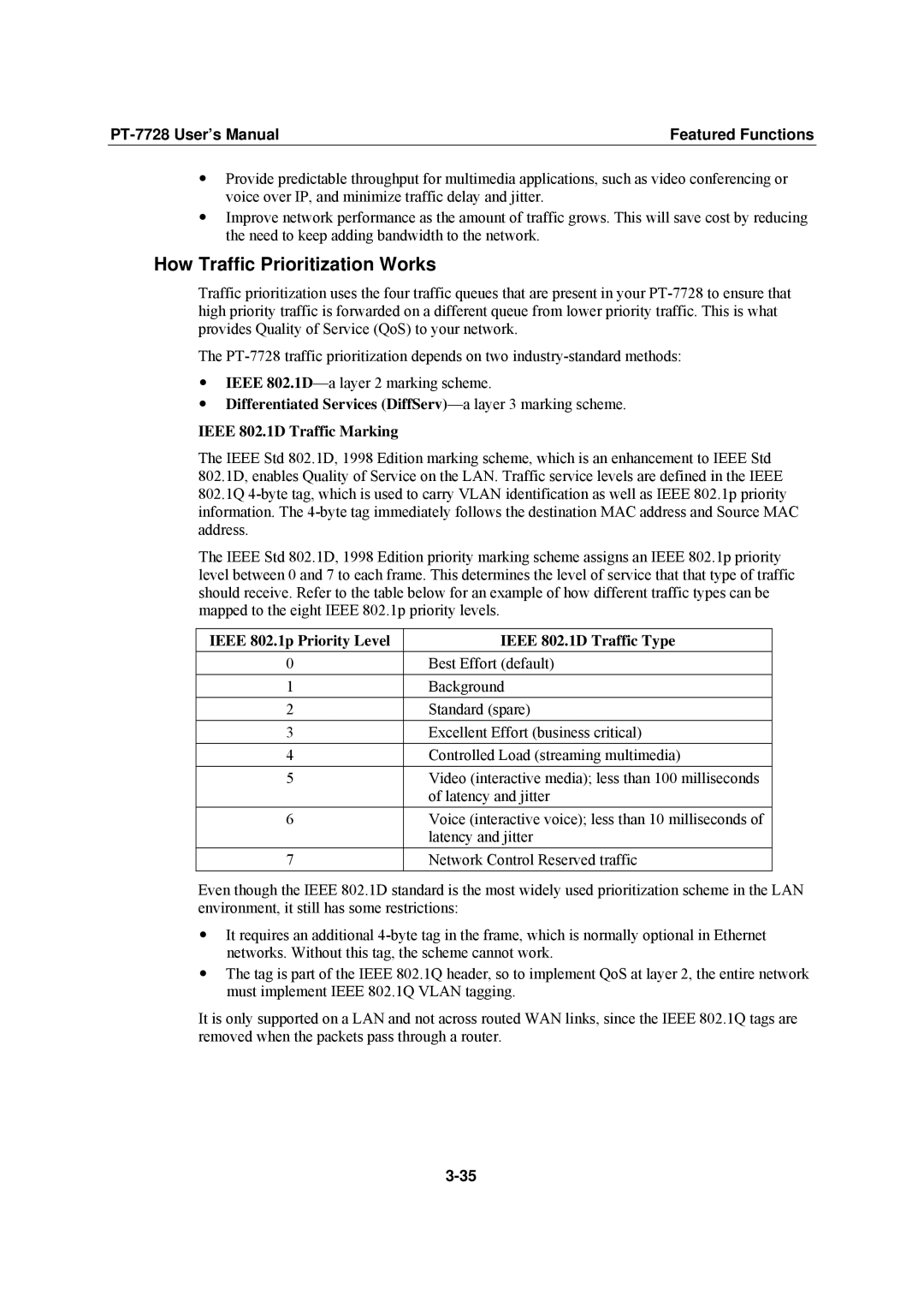| Featured Functions |
yProvide predictable throughput for multimedia applications, such as video conferencing or voice over IP, and minimize traffic delay and jitter.
yImprove network performance as the amount of traffic grows. This will save cost by reducing the need to keep adding bandwidth to the network.
How Traffic Prioritization Works
Traffic prioritization uses the four traffic queues that are present in your
The
yIEEE
yDifferentiated Services
IEEE 802.1D Traffic Marking
The IEEE Std 802.1D, 1998 Edition marking scheme, which is an enhancement to IEEE Std 802.1D, enables Quality of Service on the LAN. Traffic service levels are defined in the IEEE 802.1Q
The IEEE Std 802.1D, 1998 Edition priority marking scheme assigns an IEEE 802.1p priority level between 0 and 7 to each frame. This determines the level of service that that type of traffic should receive. Refer to the table below for an example of how different traffic types can be mapped to the eight IEEE 802.1p priority levels.
IEEE 802.1p Priority Level | IEEE 802.1D Traffic Type |
0 | Best Effort (default) |
1 | Background |
2 | Standard (spare) |
3 | Excellent Effort (business critical) |
4 | Controlled Load (streaming multimedia) |
5 | Video (interactive media); less than 100 milliseconds |
| of latency and jitter |
6 | Voice (interactive voice); less than 10 milliseconds of |
| latency and jitter |
7 | Network Control Reserved traffic |
Even though the IEEE 802.1D standard is the most widely used prioritization scheme in the LAN environment, it still has some restrictions:
yIt requires an additional
yThe tag is part of the IEEE 802.1Q header, so to implement QoS at layer 2, the entire network must implement IEEE 802.1Q VLAN tagging.
It is only supported on a LAN and not across routed WAN links, since the IEEE 802.1Q tags are removed when the packets pass through a router.
